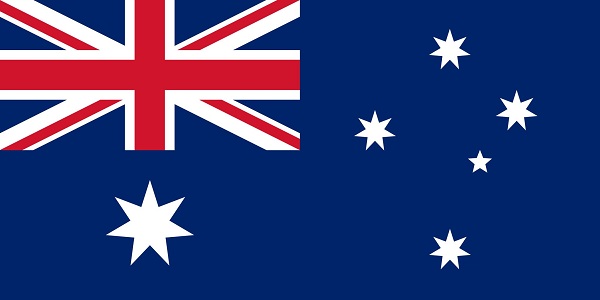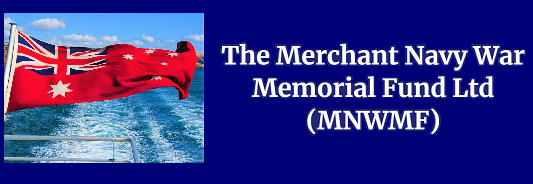
The Australian National Flag
The flag was first flown in 1901 and it is Australia’s foremost national symbol and has become an expression of Australian identity and pride.
It identifies a free and democratic people in a nation united by purpose and a sense of belonging. Our national flag belongs equally to all Australians whatever their origins. It is a right and privilege of every Australian to fly the Australian National Flag.
The flag is paraded by our defence force and displayed around the country at sporting events and by service organisations, schools, community groups and private citizens.
Symbolism
The flag has three elements on a blue field (background)
The Union Jack – occupying the upper hoist first quarter – known as canton, represents the history of British settlement, Parliamentary Democracy, Rule of Law and Freedom of Speech.
The Commonwealth Star – occupying the lower hoist third quarter – The white Commonwealth, or Federation, star. It has seven points representing the unity of the six states and the territories of the Commonwealth of Australia. The star is also featured on the Commonwealth Coat of Arms.
The Southern Cross – occupying the second and fourth quarter, in the fly. The stars are shown in white, and they represent the constellation of five stars that can only be seen from the southern hemisphere and is a reminder of Australia’s geography.
History of the Flag
- The Commonwealth Government announced a Federal Flag design competition on 29th April 1901.
- The Review of Reviews for Australia a Melbourne journal has also initiated a competition in 1900.
- It was agreed that these entries would also be included in the competition.
- The competition received 32,823 entities from all the community.
- An expert panel was put in place to assess the guidelines around history, heraldry, distinctiveness, utility, and cost of manufacture.
- A public ceremony was held in Melbourne and opened by Lady Hopetown the wife of the Governor-General to display the entries.
- The Prime Minister of Australia Mr Edmund Barton announced that five entrants who had submitted similar designs would be declared the designers of Australia’s own flag.
-
-
- Mrs Annie Dorrington, Perth, Western Australia.
- Mr Ivor Evans, Haymarket, Victoria.
- Mr Leslie J. Hawkins, Leichhardt, New South Wales.
- Mr Egbert J. Nuttall, Prahran, Victoria.
- Mr William Stevens, Auckland, New Zealand.
- Of the five two were youths, Ivor Evans a 14 year old schoolboy and Leslie Hawkins an apprentice.
- The prize money of £200 was made up of donations from The Commonwealth Government, The Review of Reviews with the Havelock Tobacco Company and the prize money was shared equally amongst the winners.
- On the day the winners were announced by the then Prime Minister Mr Edmund Barton a large flag flew embodying the designs from the Exhibition Building, Melbourne which at the time was the site of the Federal Government.
-
The Commonwealth Ensigns
In February 1903 it was announced in the Commonwealth Gazette that King Edward VII had approved the design for the Flag of Australia.
- The Commonwealth Blue Ensign
- The Commonwealth Red Ensign – for the Merchant Navy.
On both ensigns the stars of the Southern Cross were simplified to four seven-pointed stars and one five-pointed star. In 1908 a seventh point was added to the Commonwealth star to represent the Australian territories.
However, people were confused about the use of two Australian flags. The blue ensign was meant for official and naval purposes and the red ensign was meant to be used by the merchant fleet, but the general public began using the red ensign on land.
The Flags Act 1953
In 1941, Prime Minister the Rt Hon Robert Menzies issued a press statement recommending the flying of the blue ensign as a national emblem. The flags Act 1953 was passed by Parliament and was one of the few Commonwealth Bills signed by the Monarch rather than the Governor-General. This document was signed by Queen Elizabeth herself during the 1954 Royal Tour of Australia. The Australian Blue Ensign was now the Australian National Flag and the Australian Red Ensign as a flag for merchant ships registered in Australia.
Her Majesty’s signature would validate the transition in national flags which was taking place, from Union Flag to the Australian National Flag.
In 1998 an amendment was passed to ensure that the Australian National Flag can only be changed with the agreement of the Australian people.
The Commonwealth Flag Network
You can register for the Commonwealth Flag Network for up-to-date advice on how to fly the flag on special occasions. After registering you will receive an email at the same time as flag marshals around the country. Follow the link: nationalsymbols@pmc.gov.au.

The Australian Red Ensign
The Red Ensign is one of the oldest flags we use that has its origins from Britain and it has been affectionately known by seaman as the ‘Red Duster’ and it is probably the most widely known of all the world’s flags.
In the first half of the twentieth century, the Red Ensign had widespread use in Australia.
From 1901 to 1954 the Australian Red Ensign was generally referred to as ‘the Merchant Flag of the Commonwealth of Australia’. Like the Australian National Flag, it was based on the five winning entrants in the 1901 Federal Flag Competition and 3 September 1901 is the ‘birthday’ for both flags. The design changes made to the Australian National Flag in 1903 and 1908 were made to the Australian Red Ensign at the same time.
The Australian Red Ensign was subject to Admiralty warrants made pursuant to section 73 of the Merchant Shipping Act 1894 (UK) until Australia’s own shipping laws took effect in January 1982.
The Admiralty Warrant of 4 June 1903 authorised the Australian Red Ensign for vessels registered in Australia. In 1932 it was realised that this did not include many private non-commercial vessels, which were rarely registered. Technically they were liable to a substantial fine if they did not fly the British Red Ensign. An Admiralty Warrant of 5 December 1938 replaced that of 1903 and authorised all ships and boats owned by British residents in Australia and New Guinea Mandated Territory to fly the Australian Red Ensign.
The Red Ensign was widely used in Australia in unofficial capacities beyond its official use as a Merchant Navy flag. This was brought about due to an overabundance of flags made by flag makers, use by local governments and institutions along with soldiers so it gave the impression to the public that the Red ensign was the official flag of Australia.
The Flag Act 1953 confirmed by legislation that The Blue Ensign (Australian National Flag) was confirmed as Australia’s chief symbol. This action brought an end the unofficial use of the Red Ensign. From 1953 to 1982 this confirmed the flag design, linked the flag to the Navigation Act 1912.
This was the legislative situation until 26 January 1982 when the Shipping Registration Act 1981 and the Shipping Registration Regulations 1981 came into force. The Shipping Registration Act 1981 confirmed the Australian Red Ensign as the official proper “Colours” flag to be flown by Australian-registered merchant ships.
Either the Australian National flag or the Australian Red ensign can be flown by government ships, fishing vessels, pleasure craft, small craft, and commercial vessels under 24 metres in tonnage length, but not both ensigns at the same time.
The rule for flying flags on non-defence ships are set out in Sections 29 and 30 of the Shipping Registrations Act 1981 and regulations 22 of the Shipping Registration Regulations. Foreign vessels may, as a courtesy, fly from the foremast either the Australian national Flag or the Australian Red ensign when berthed at an Australian port.
The Shipping Registration Act 1981
The purpose of Shipping Registration in Australia is to grant ships Australian nationality. It also allows for Australian ships to fly the Australian National Flag or the Australian Red Ensign in accordance with Australia’s obligations under article 91 of the United Nations Convention on the Law of the Sea 1982, to which Australia is a party.
When a ship is registered in Australia it receives legally recognisable Australian nationality, giving it advantages at home and abroad. The ship will be accorded Australian protection on the high seas and in foreign ports.
The shipping registration office is part of the Australian Maritime Safety Authority (AMSA).
